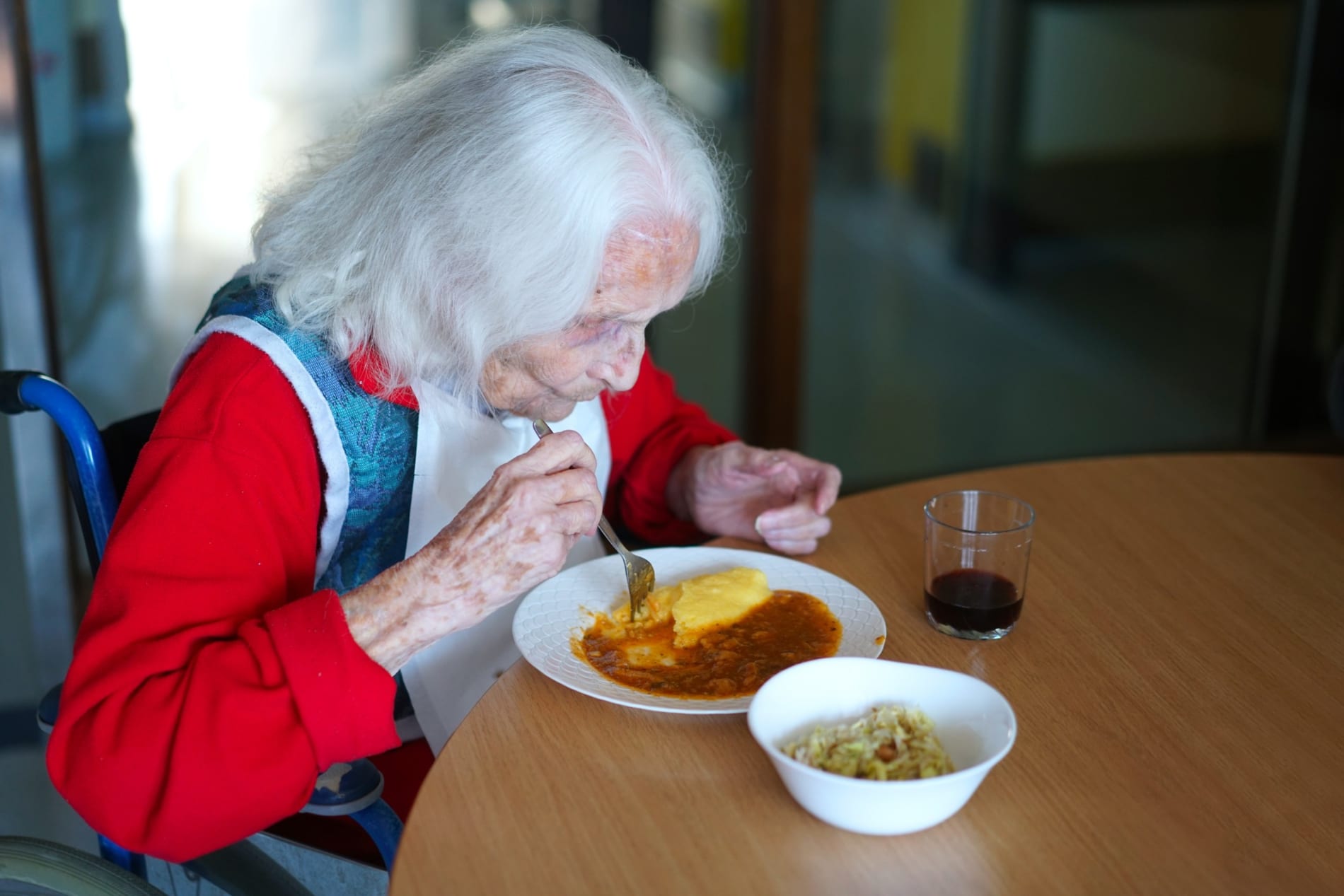The 2010 Senior Australian of the Year, Maggie Beer, is currently in the spotlight with her new ABC TV three-part series, Maggie Beer’s Big Mission, which follows her efforts to transform the meals and dining experience at an aged care home in Perth.
The celebrity chef, food author and restaurateur has long been an advocate for better nutrition in aged care, and spoke to the issue at the 2021 Royal Commission into Aged Care Quality and Safety.
She told the commission that meals being served in aged care homes “were too often prepared with little regard to presentation, aroma or nutrition”.
What a great idea @AlboMP - better food and nutrition in aged care with the help of the wonderful Maggie Beer #auspol https://t.co/KruGMr8zQ2
— Prof Jenny Hocking (@palaceletters) April 8, 2022
Among the findings from the royal commission was that the average expenditure per person each day on food in some residential aged care facilities was less than $10 a day.
Since the report by the 2021 royal commission, which stated that the residential aged care sector had “failed to meet the nutritional needs of people for whom they care”, the provision of healthy and interesting food in aged care homes has come under increasing scrutiny.
The Australian government estimates the cost of malnutrition in residential aged care facilities at approximately $9 billion a year.
Recently, the Aged Care Quality and Safety Commission cited a study of 21 aged care homes in Victoria, which found 68% of residents were malnourished or at risk of malnutrition, and that the provision of meat and dairy foods – important sources of protein – did not meet recommended levels.
“The consequences of poor nutrition are significant and often irreversible for older people,” the report said. “Malnutrition is associated with a range of health risks, including an increased incidence of falls and fractures, infection, and time needed to heal or recover from injury.
“Aged care residents with poor nutrition, including malnutrition, are at greater risk and severity of pressure injuries, loss of bone and muscle mass/strength, frailty, reduced functional capacity and greater care needs.
“They are also at heightened risk for healthcare-associated infections and mortality in hospital.”
Increase in malnutrition likely
With more than 200,000 Australians living in aged-care homes – and estimates that number will increase by 80% over the next two decades –that’s a large number of older Australians with avoidable health risks due to malnutrition.
Further, in early April this year, the federal government announced that a new rights-based Aged Care Act, which was recommended by the royal commission and due on 1 July this year, had been delayed until possibly 2025.
Researchers from Monash and Griffith universities have conducted the first large-scale study in more than a decade – including more than 700 aged care residents in New South Wales, South Australia, and Queensland – that examined the prevalence of malnutrition in Australian residential aged care facilities.
We're committed to the journey of ensuring Australians in aged care get the nutritional support they need for a fulfilling life. Karly Bartrim #APD and Professor Judi Porter spoke to @abcnews advocating for malnutrition screening in aged care. Read more https://t.co/sb3D1ORz7H pic.twitter.com/C5nu9fGpCS
— Dietitians Australia (@dietitiansaus) July 11, 2024
The study, which has just been published in the journal Healthcare, found that 40% of residents were categorised as malnourished, including 6% characterised as severely malnourished.
To begin addressing the problem of malnutrition, there needs to be nationally-accepted systems for routine malnutrition screening, according to lead author of the study Dr Jonathan Foo, from Monash University’s Department of Physiotherapy.
“Early identification of malnutrition is key, as it’s incredibly challenging for older people to regain lost muscle strength and function. This requires regular malnutrition screening followed by prompt intervention.”
With life expectancy increasing globally – and estimates that the number of people 60 years and older will double, and that those 80 years or older will triple, reaching a global population of 2.1 billion and 426 million, respectively – there’s a need to adopt innovative screening approaches that make best use of available workforce and funding, Dr Foo argues.
“Despite the health problems caused by malnutrition, aged care providers aren’t suitably resourced to perform routine screening using validated tools, meaning many malnourished residents are likely to be undetected and therefore untreated.”
He said screening is essential for identifying, managing, and holding aged care providers accountable for addressing malnutrition, but that implementation requires “new ways of thinking, considering how we can integrate screening into business-as-usual leveraging off supportive workforce models, policy incentives, and technology”.
Resources limits screening program
Dr Foo warns that existing reporting on weight loss mandated by the Australian government fails to detect the majority of malnourished residents, but also acknowledges the challenge of operating an accurate routine screening program given limited resources.
“Our study confirms that malnutrition continues to be an ongoing challenge in aged care, suggesting that current models for identifying and managing malnutrition aren’t working.”
The study authors recommend that regular screening “is crucial to identify those who need a full malnutrition assessment and intervention … and, to deliver effective care, the sector needs a valid and reliable malnutrition screening instrument that can feasibly be implemented as part of routine care”.
“Our research group is working on implementing automated malnutrition screening and food-first malnutrition support pathways with our forward-thinking aged care partners,” Dr Foo said.
“The sector is already overwhelmed by all the requirements of providing care to ageing Australians. We need to focus on approaches that overcome challenges rather than burdening providers.”






